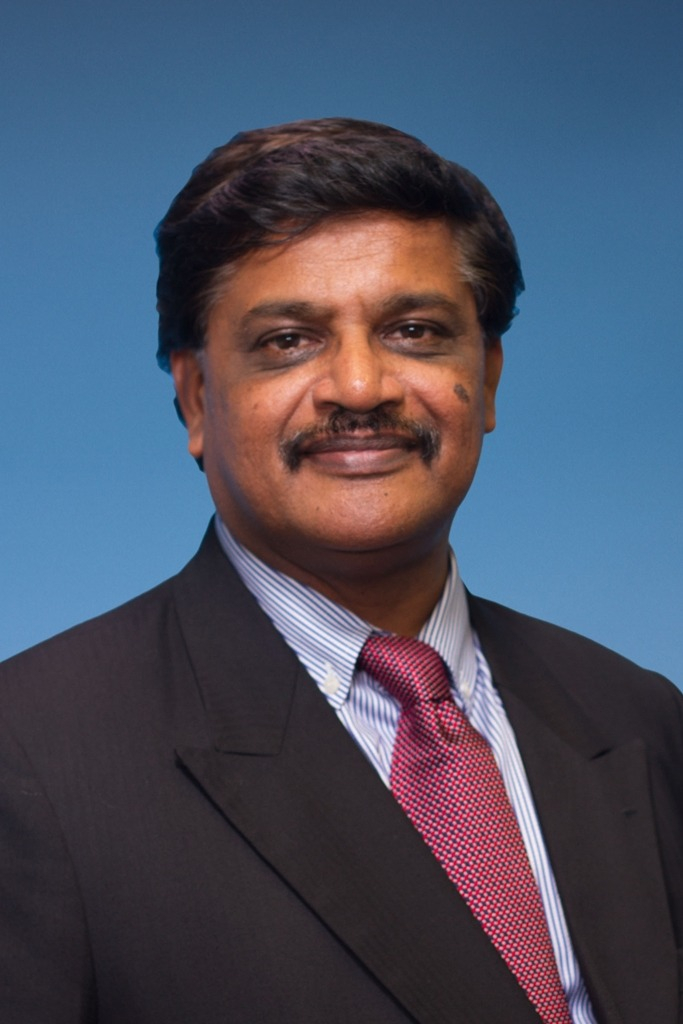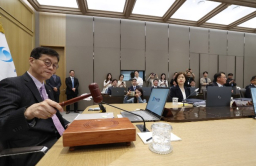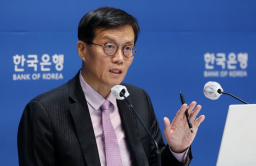-
KOSPI 2577.27 -2.21 -0.09%
-
KOSDAQ 722.52 -7.07 -0.97%
-
KOSPI200 341.49 +0.02 +0.01%
-
USD/KRW 1396 -2.00 0.14%
S&P expects BOK to cut rate by 100 bps in 2024 for growth
Economy
S&P expects BOK to cut rate by 100 bps in 2024 for growth
S&P Global Market Intelligence Asia-Pacific Chief Economist Rajiv Biswas says Korea’s potential growth could drop to 1-1.5% by 2050
By
Jul 12, 2023 (Gmt+09:00)
2
Min read
News+

South Korea’s central bank is expected to cut its policy interest rate by one percentage point next year with inflationary pressure easing further to support growth in Asia’s fourth-largest economy, S&P Global Market Intelligence Asia-Pacific Chief Economist Rajiv Biswas said on Wednesday.
“With CPI inflation pressures expected to moderate further in 2024, the Bank of Korea is expected to begin easing monetary policy in gradual steps during 2024, with four rate cuts of 25 basis points each expected during 2024,” Biswas told The Korea Economic Daily in an interview in Seoul.
“Monetary policy easing during 2024 will help to provide monetary stimulus to support economic growth. This will be particularly helpful for the residential construction sector, which has faced significant headwinds during the past 12 months,” said Biswas, expecting economic growth to accelerate to 2.4% next year from a forecast of 1.4% in 2023.
South Korea’s headline inflation in June dropped for a fifth straight month to a 21-month low of 2.7%.
The remarks came after Bank of Korea Governor Rhee Chang-yong continued to defy market expectations for a monetary policy shift, saying it was too early to talk about cutting interest rates before the country sees clear indicators of inflation stabilizing at around the central bank’s long-term target of 2%.
Rhee in May left the door open for a 25-bp hike after the central bank left the base interest rate unchanged at 3.50%.
RECOVERY IN SEMICONDUCTOR INDUSTRY
Overseas sales of semiconductors, South Korea’s top export item, are predicted to rebound in the second half, Biswas said. The country is home to the world’s two largest memory chipmakers – Samsung Electronics Co. and SK Hynix Inc.
“Some upturn in demand during H2 2023 is expected due to higher orders for Christmas season sales and new smartphone model rollouts by major consumer electronics firms,” said Biswas.
“Over the medium term, structural factors are expected to support the future growth of the semiconductor industry, including industrial automation, 5G smartphone rollouts and AI,” he said, referring to artificial intelligence.
The government said on Tuesday that semiconductor exports were likely to recover from October. Overseas sales of chips in the first half skidded 37.4% to $43.2 billion from a year earlier, putting pressure on the country’s overall overseas sales.
FALLING POPULATION, AGING
The country needs structural reforms as the economy is facing the key challenges of declining population and aging in the long term, Biswas said.
“South Korea’s potential growth rate could drop to a range of around 1% to 1.5% per year by 2050 due to the aging demographic and the declining size of the population,” he warned, adding that the country's potential growth rate has already tumbled to around 2.5% in 2021 from about 7% in the mid-1990s.
“Consequently, structural reforms to increase the potential growth rate will be a key policy priority over the medium term. These reforms would include policy changes to lift the labor force participation rate, improve services sector productivity, accelerate digitalization and further boost the adoption of industrial automation.”
Write to Se-Min Huh at semin@hankyung.com
Jongwoo Cheon edited this article.
More To Read
-
 Korean chipmakersKorea chip exports to rebound in Oct; car, cell exports to stay firm
Korean chipmakersKorea chip exports to rebound in Oct; car, cell exports to stay firmJul 11, 2023 (Gmt+09:00)
-
Jul 04, 2023 (Gmt+09:00)
-
May 25, 2023 (Gmt+09:00)
-
May 26, 2023 (Gmt+09:00)
-
Apr 26, 2023 (Gmt+09:00)
-
Sep 06, 2022 (Gmt+09:00)







